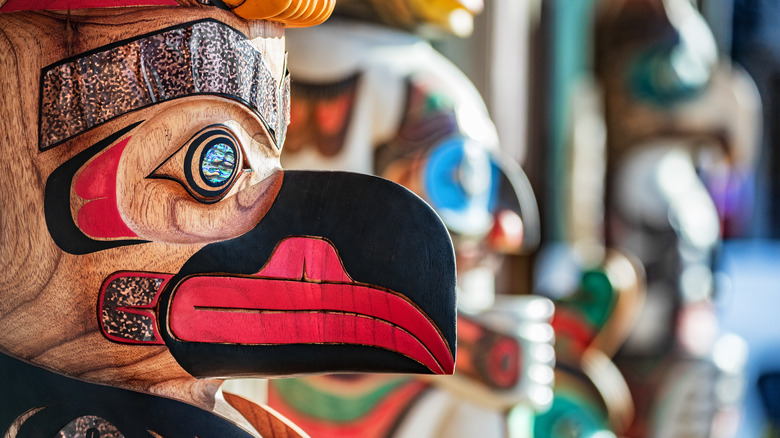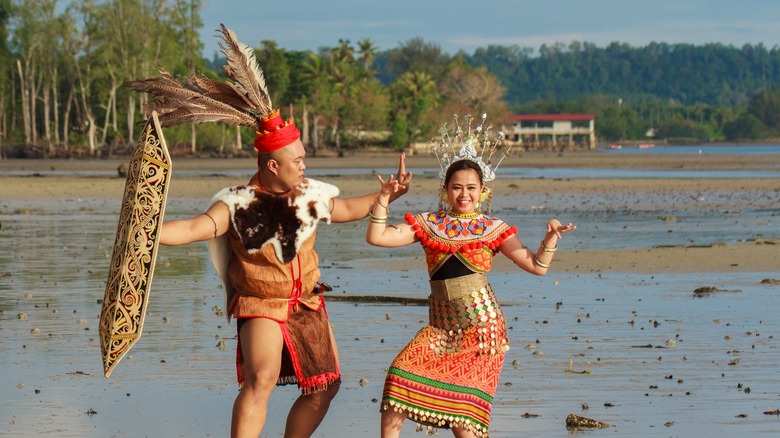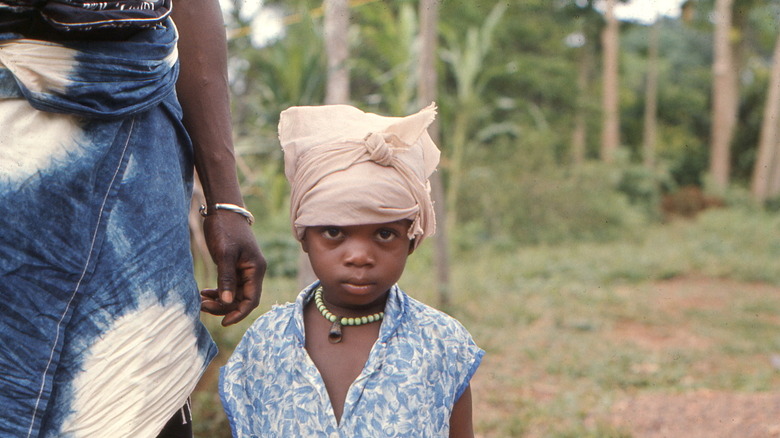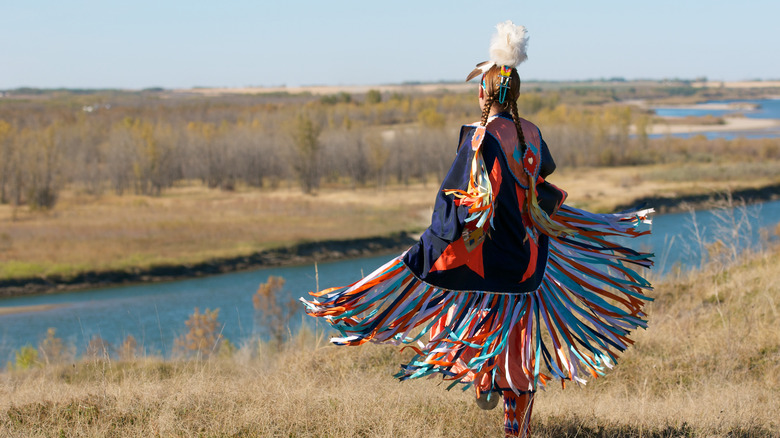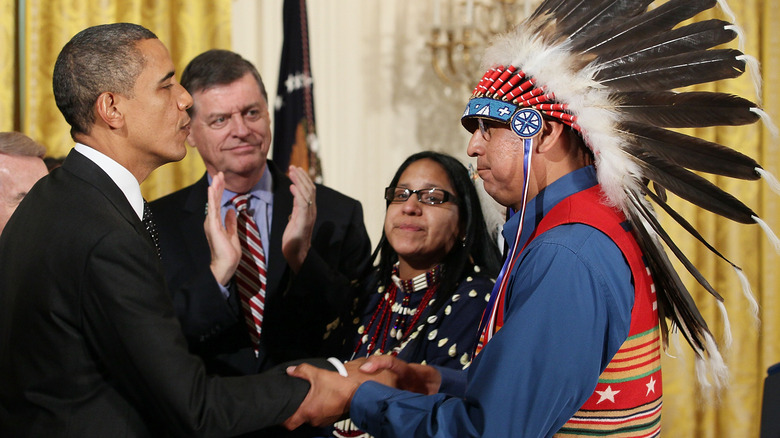What Is The Significance Of A Spirit Animal Among Indigenous Cultures?
The term spirit animal is commonly used on the internet in comedic fashion, such as one referring to Beyonce as their spirit animal. It is often evoked as a form of ironic kinship through meme culture. However, this is actually quite an offensive thing to do, as spirit animals are very important to many indigenous cultures. As Discover Magazine explains, spirit animals aren't just memes for non-Indigenous people to use, but a form of sacred spirituality. Renee Gokey of the National Museum of the American Indian told Discover Magazine why these memes are bad.
"What I hate about those memes, and what a lot of other people hate about them, is that they almost always go along with stereotypes about Indians," she said. She further said that the memes "[make] us seem like animals or mystic savages who talk to animals all day." Various indigenous cultures have their own interpretations and traditions when it comes to spirit animals, as there's no one-size-fits-all read (per Britannica). So, what is the significance of spirit animals among these diverse groups?
What is totemism in Wiradjuri culture?
The Wiradjuri, or people of three rivers, make up one of New South Wales's biggest aboriginal groups in existence. According to Bathurst Heritage Matters, the Wiradjuri have been around for over 40,000 years, making them one of the oldest Indigenous groups still around. They make up the three rivers of the Calare, the Murrumbidgee, and the Wambool. The Wiradjuri held traditional ceremonies involving dances, body paint, and animal skin clothing.
As stated by Britannica, totemism in Wiradjuri culture is split into two subgroups: flesh (group totem) and bala (individual totem). The flesh totem is matrilineal, coming from the mother. On the flip side, the bala totem, which translates to spirit companion, is given to medicine men. There are rules on how medicine men can handle their totem. For example, they cannot eat their own totem, as it would bring great sickness. Committing an offense against a totem is seen as tantamount to an offense against oneself.
What totemism means to the Iban people
The Iban people are Indigenous to the Malaysian state of Sarawak and also participate in totemism as a tradition. According to the Joshua Project, the Iban people had a tremendous reputation for headhunting centuries ago. Headhunting as a tradition meant keeping the heads of fallen enemies as a sort of personal trophy. Nowadays, however, the Iban are pretty much entirely peaceful and don't engage with the practice anymore. One of the largest occupations among Iban tribes is farming, which included crops like oil palm, rubber, cocoa, and more. Tradition is still incredibly important to a good chunk of Iban people, and many still practice the totemism and animism of their ancestral heritage.
As stated by Britannica, individual totemism is practiced within much of Iban culture. This practice usually starts with a dream, in which either a long-lost relative or ancestor appears. This person then gives the name of an animal, which may then be given respect and observance by any individual member. Not every member can acquire a spirit animal, however, and those who do need to treat said spirit with tremendous respect in regard to various rules and regulations within the tribe.
What totemism means to the Kpelle people
The Kpelle people are Indigenous to Liberia, Africa, and are one of the largest ethnic groups in the country today. As stated by Britannica, agriculture is the most important occupation for the Kpelle people, with crops like cassava, various vegetables and fruits, sugar cane, and peanuts all being grown and harvested by them for sustenance. Kpelle government operates to a hierarchy, accordingly. Paramount chiefs are high-ranking officials that essentially act as middlemen between commoners and government and can also handle disputes and civic issues like road maintenance.
According to UCLA's Social Sciences Center, the Kpelle are also religious and spiritual, with many being animistic in nature. In Kpelle culture, there are genii, which are lesser spirits, along with personal totems and witchcraft. Totems often act as guides for individuals in Kpelle traditions, being able to warn people of imminent threats. Totems can take the form of plants, animals, and so on, and have their own rules of respect and offering requirements. These totems are believed to be magical in nature and can even be altered by the individual in possession of it, depending on certain circumstances.
How totem poles function in First Nations culture
First Nations people reside in Canada alongside the other indigenous groups, Inuit and Métis. First Nations people can be found in many territories and providences, such as Alberta, Manitoba, Quebec, Nova Scotia, Yukon, Prince Edward Island, New Brunswick, and many more. As stated by The Canadian Encyclopedia, First Nations are sometimes called Amerindians or Natives, but these terms are often improper and do not go into sufficient detail. The term "First Nations" itself describes a broad variety of different Indigenous groups in Canada, such as Mohawk, Oneida, Seneca, and more (per Britannica).
Many people might be familiar with totem poles. According to Indigenous Foundations, First Nations tribes create totem poles as a kind of ancestral or historical monument. They can represent many different ideas and traditions, depending on intent. Totem pole designs generally have animals or humans in very stylized forms. A totem often means some kind of supernatural guardian that may hold cultural significance to any individual or group within First Nations practice. Today, many First Nations people fight back against colonialist attempts at wiping out totem pole carving entirely.
What totemism means in Ojibwe culture
The Ojibwe have lived and traveled across northeastern and western parts of North America for thousands of years. As said by the Minnesota Historical Society, Ojibwe people found homes in abundance in both Canada and America, being one of the largest tribes in North America today. The Ojibwe make their living off hunting and fishing, along with rice, sugar, and syrup harvesting. Gift-giving is a huge part of Ojibwe culture, with gift exchanges and kinship ceremonies taking place often. Much of the Ojibwe people's homelands were splintered and taken near the end of the 19th century.
According to Britannica, the word "totem" actually comes from the Ojibwa word "Ototeman," which means one's brother-sister kin. In Ojibwa culture, Ojibwa clans have their own totems, which was often represented by the numerous animal skins worn by clan members. Ojibwa clan names might have also been derived from local animals with which Ojibwa people developed spiritual connections.
